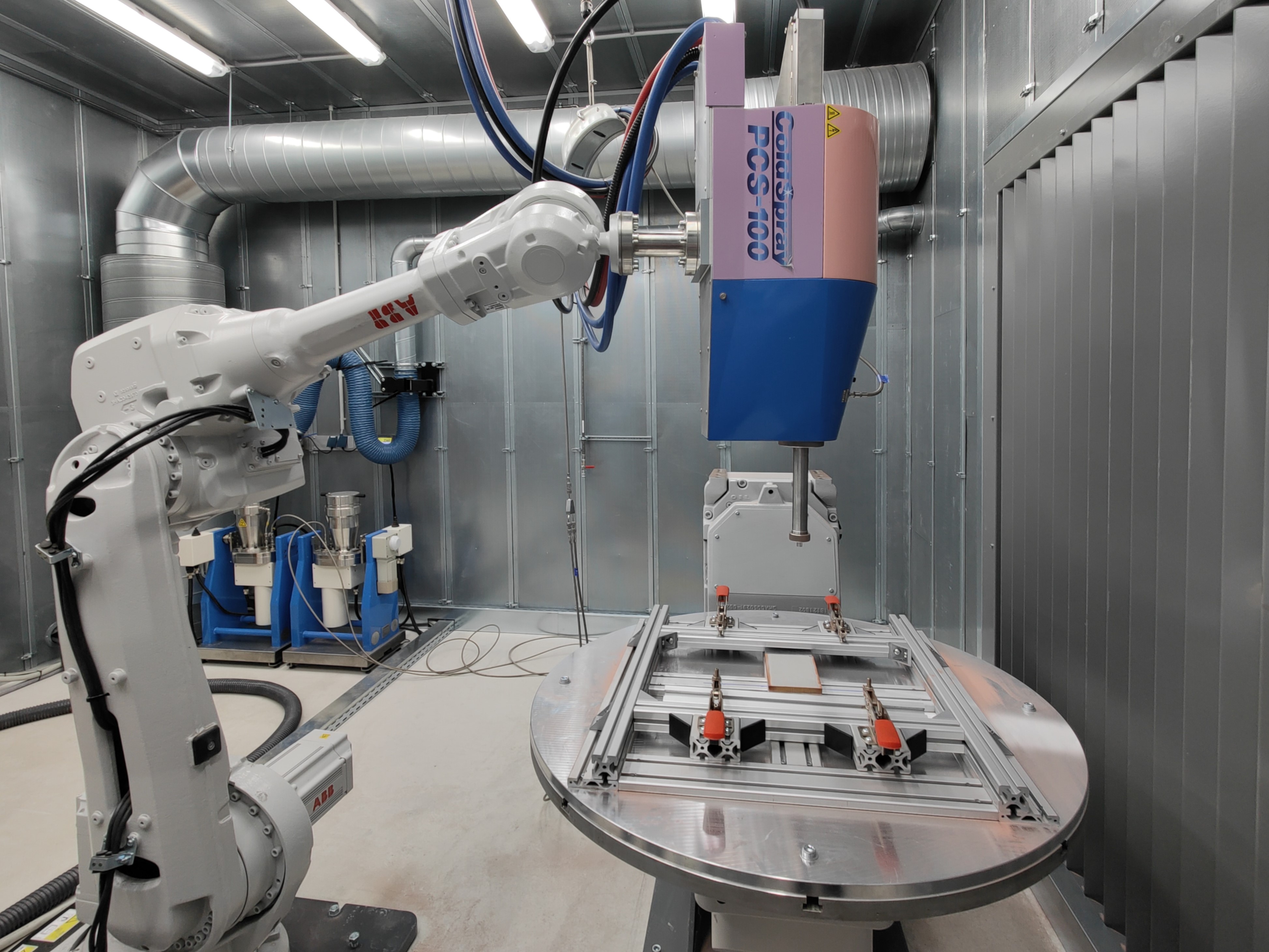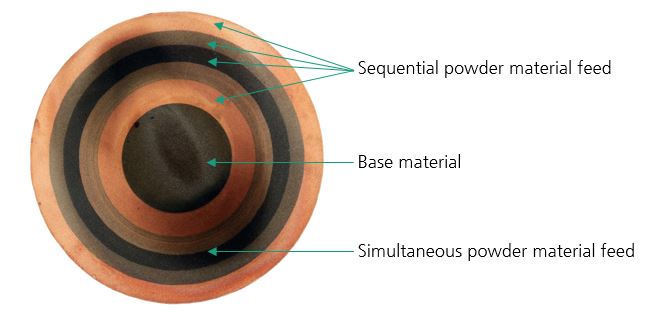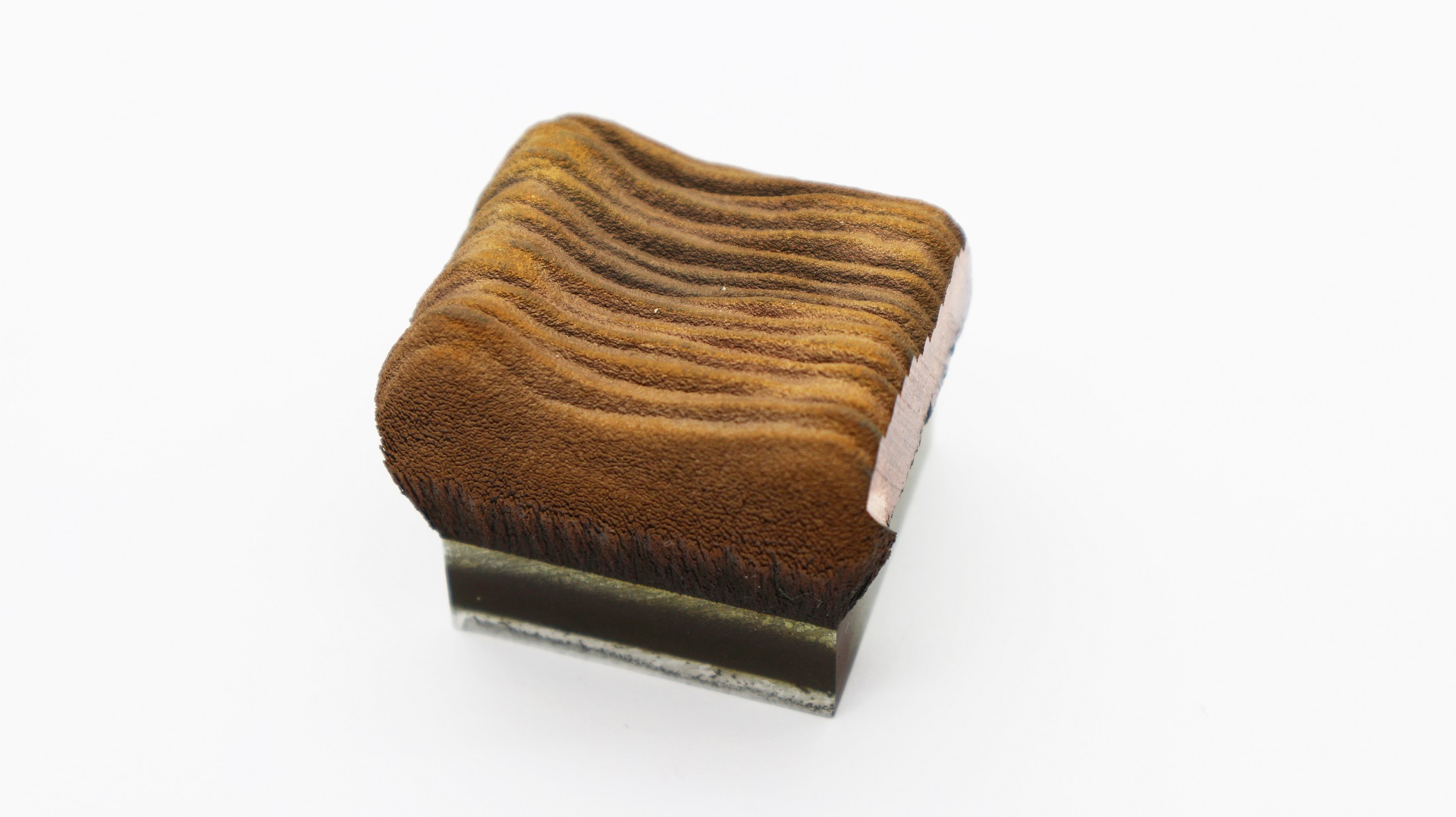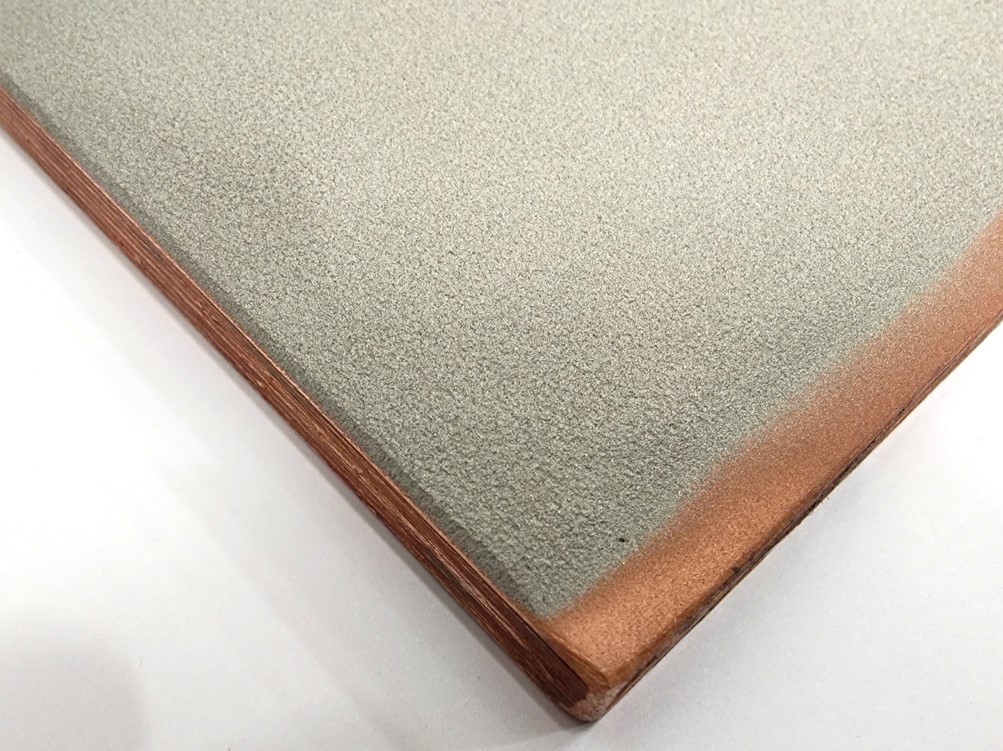For this purpose, a complete system for cold spraying was set up in the Cold Spray Additive Manufacturing Lab (CSAM Lab). This consists of a soundproof spray booth with two industrial robots, a rotary and tilting table, and the cold gas spraying system. One of the two robots guides the cold gas spray application head and the rotary and tilting table is used to position the component (see Figure 1). The additional components required for operation include a filter system, including a room air extraction system, and a nitrogen supply as process gas. The cold gas spraying system offers a maximum operating temperature of up to 1,100 °C, an operating pressure of up to 70 bar, and enables the processing of a wide range of materials.
In the production of multi-material components, a distinction can be made between sequential and simultaneous material feeding (see Figure 2). In sequential material feeding, the materials are applied one after the other (see Figure 3), and a discrete material transition is created between the two materials. One application, for example, is the combination of copper alloys with nickel-based alloys resistant to high temperatures for components subjected to high thermal loads. This material pairing allows heat dissipation to be accelerated. An example of this is shown in Figure 4 with a copper baseplate (conventionally produced) and a nickel-based alloy coating. With simultaneous material feeding, two materials can be applied simultaneously in a defined mixing ratio, provided that the process parameter window for the different materials is sufficiently similar. This procedure can be used to produce a graded material transition between two materials.




